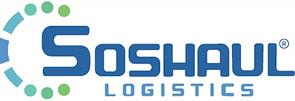How to Write an Effective Marketing Plan for Your Trucking Business
- Samantha Allen

- Aug 26, 2024
- 4 min read
Creating an effective marketing plan is essential for the success of your trucking business. A well-crafted plan not only helps you reach your target audience and meet your business goals, but also ensures that your business stands out in a competitive market. Here’s a guide to help you develop a marketing plan for your trucking business!

1. Understand Your Market
Before you dive into creating a marketing plan, it’s crucial to understand the market in which you operate including the geographic regions, the type of freight those regions offer, and your competition. This involves researching your industry, competitors, and potential customers. Consider the following steps:
Conduct a Market Analysis: Identify trends in the trucking industry and your targeted regions, such as the demand for specific services (e.g., refrigerated trucking or flatbed transport), regulatory changes, and economic factors that might impact your business.
Analyze Competitors: Study your competitors to understand their strengths, weaknesses, and marketing strategies. What services do they offer? How do they price their services? How much capacity do they offer? What channels do they use to reach customers?
Identify Your Target Audience: Define your ideal customer. Are you targeting small, mid-size, or large businesses? What kind of freight do they have? What kind of extra services are you interested or not interested in providing (inside delivery, tarping, liftgate, lumper, etc)? What lanes and regions do you plan to serve? Understanding your audience's needs and pain points will help you tailor your marketing message effectively.
2. Define What Differentiates Your Business
What sets your trucking business apart from the competition? It’s the reason customers should choose your services over others. To define how you stand out from the rest, consider the following:
What Makes Your Business Unique? Do you offer specialized services, such as hazardous materials transportation or expedited shipping? Do you have new equipment or a special certification? Do you offer live tracking?
Why Should Customers Choose You? Highlight the benefits that customers will receive by choosing your services, such as reliability, competitive pricing, or exceptional customer service.
What makes your business different should be the cornerstone of your marketing message!
3. Set Clear Marketing Goals
Your marketing plan should include specific, measurable, achievable, relevant, and time-bound (SMART) goals. These goals will guide your marketing efforts and help you track your progress. Examples of SMART marketing goals for a trucking business might include:
Acquire at least one new customer each month in central and western Michigan by targeting small to mid-sized businesses needing reliable flatbed services. Allocate resources to a dedicated dispatcher who will focus on outreach and relationship-building with potential customers.
Increase customer retention by 20% within 6 months by implementing a loyalty program offering service rate discounts, securing at least two new contract lanes, and improving service and communication through regular check-ins and feedback collection.
Increase brand awareness by growing the company’s social media followers on Facebook by 500 followers and posting 3 times a week within the next 12 months.
4. Develop Your Marketing Strategy
Your marketing strategy outlines how you will achieve your goals. It includes the tactics and channels you will use to reach your target audience. Consider the following elements when developing your strategy:
Branding: Ensure your branding is consistent across all marketing channels. This includes your logo, color scheme, website, and marketing materials. Your branding should reflect your business’s values and what differentiates your company.
Utilize the Marketing Mix (4 P’s): Ask yourself the following questions using the 4 P’s:
Product/Service – what services will I offer? Will I offer intrastate or interstate service? Will I offer dry van, flatbed, or reefer transportation? Will I offer specialized equipment? Will I provide additional services to my customers to differentiate my business?
Price – at what price will I sell these services? Will I intentionally price lower than my competition or higher? What is the value of our service from the customer’s perspective? (while pricing will vary per load, it is good to have a target margin or rate per mile in mind)
Place – where am I offering transportation services? Where are my targeted customers/freight located? Are there any primary states/jurisdictions I provide services to and from? Are there any states/jurisdictions that I will not provide services for?
Promotion – how can I reach my target customer? When is the best time to promote my transportation services? Where will I send my marketing messages? What methods will I use to promote my business? Under the umbrella of Promotion lies the Promotional Mix. This mix contains 6 primary methods to communicate with your target audience. Consider the following ways to reach your marketing goals – personal selling, advertising, direct marketing, sales promotions, public relations, or social media. Read more about how to use the promotional mix in your marketing plan here.
5. Budgeting Your Marketing Plan
Your marketing plan should include a detailed budget that outlines the costs associated with your marketing activities. Determine how much you will spend on each strategy to meet your marketing goals.
6. Measure and Optimize
The final step in your marketing plan is to measure the effectiveness of your marketing efforts and make necessary adjustments. This is why making your SMART goals Measurable is so important!
Regularly track and review your Key Performance Indicators to understand what’s working and what’s not. Are you meeting your goals? Which methods are driving the most success? Adjust your strategy as you discover what works and what doesn’t!
An effective marketing plan is essential for the growth and success of your trucking business. By understanding your market, defining what sets your business apart, setting clear goals, and developing a clear strategy, you can position your business for long-term success.
Start your trucking business off the right way! Learn more about our new book, How to Start, Drive, and Accelerate a Trucking Business.

Interested in being notified when more free resources or courses are available? Subscribe down below and you'll be the first to know!
Soshaul Logistics LLC and its affiliates do not provide tax, legal or accounting advice. This material has been prepared for informational purposes only, and is not intended to provide, and should not be relied on for, tax, legal or accounting advice. It is meant to serve as a guide and information only and Soshaul Logistics, LLC does not assume responsibility for any omissions, errors, or ambiguity contained herein. Contents may not be relied upon as a substitute for the FMCSA's published regulations. You should consult your own tax, legal and accounting advisors before engaging in any transaction or operation.




Comments